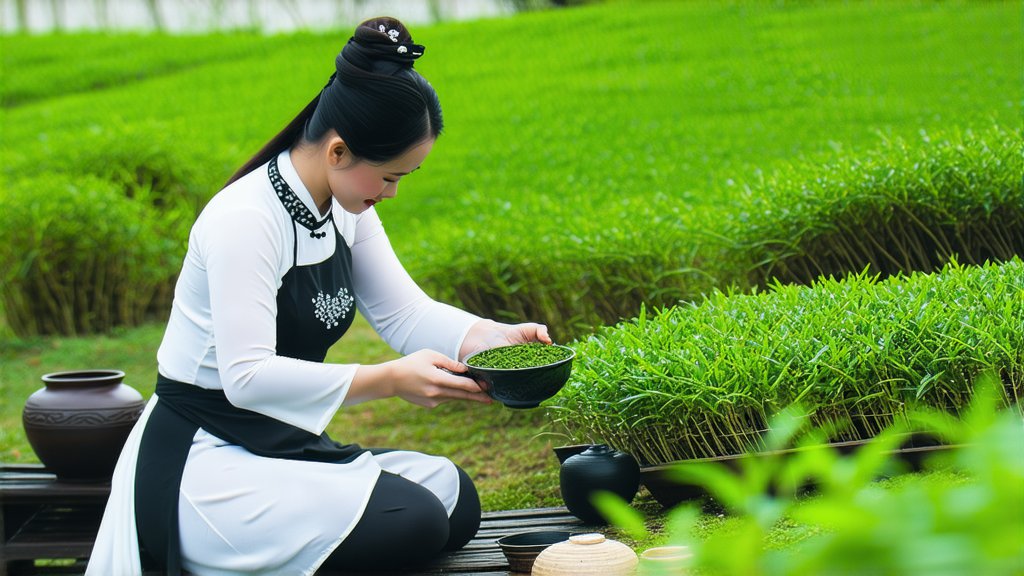
Tieguanyin, often hailed as the "Queen of Oolong" teas, is a distinguished variety that originates from the picturesque hills of Anxi County in Fujian Province, China. This article delves into the rich history, diverse varieties, intricate production process, and nuanced art of appreciating Tieguanyin, offering an immersive experience for both novice enthusiasts and seasoned connoisseurs.
Historical Background
The name "Tieguanyin" translates to "Iron Goddess of Mercy," a moniker bestowed upon this exquisite tea due to its enchanting aroma and taste that evoke a sense of divine tranquility. The cultivation of Tieguanyin dates back to the early Qing Dynasty (1644-1912). According to legend, the tea was discovered by Wei Yin, a poor scholar who found a unique tea plant while studying in the Anxi region. The plant's exceptional qualities soon gained recognition, leading to its widespread cultivation and global acclaim.
Varieties of Tieguanyin
Tieguanyin encompasses several sub-varieties, each with distinct characteristics influenced by factors such as terroir, climate, and processing techniques. The primary varieties include:
- Xiang Xing (Fragrant Type): Known for its high floral fragrance and smooth texture, this variety is the most popular and widely consumed.
- Chen Xiang (Rich Fragrance Type): Featuring a more robust flavor profile with a hint of roasted notes, this type appeals to those who prefer a stronger brew.
- Dan Cui (Single Bush): Grown from specific ancient tea trees, Dan Cui offers a unique and complex flavor profile that is highly sought after by collectors and aficionados.
Production Process
The journey from leaf to cup for Tieguanyin involves meticulous craftsmanship and adherence to traditional methods. Here is an overview of the key stages in its production:
-
Plucking: Only the tender shoots and leaves are handpicked, ensuring the highest quality. This usually occurs in spring and autumn when the tea plants are at their peak vitality.
-
Withering: The freshly picked leaves are spread out in thin layers under the sun or in well-ventilated rooms to reduce moisture content and initiate enzymatic activity.
-
Fixation (Shaqing): The leaves undergo a brief high-temperature fixation to halt oxidation. This step is crucial for preserving the tea’s green color and fresh aroma.
-
Rolling (Bao Rou): The fixed leaves are rolled to release their essential oils and shape them into tight curls, enhancing both flavor and appearance.
-
Oxidation: The rolled leaves are allowed to partially oxidize, a delicate balance that determines the tea's final flavor profile.
-
Roasting: Depending on the desired variety, the leaves may be lightly or heavily roasted to develop their characteristic aroma and taste.
-
Sorting and Packaging: The finished tea is sorted by grade and packaged with care to maintain its freshness and integrity.
Appreciating Tieguanyin
To truly appreciate Tieguanyin, one must engage in the traditional Chinese tea ceremony, which emphasizes mindfulness and respect for the tea. Here’s a step-by-step guide to savoring this extraordinary tea:
-
Preparation: Use a Yixing clay teapot or a Gaiwan (a lidded bowl), both of which are ideal for retaining the tea's aroma. Rinse the teaware with hot water to warm them up.
-
Infusion: Place about 5-7 grams of Tieguanyin leaves into the teapot. Pour in hot water (around 90-95°C or 194-203°F) and immediately decant the first infusion to cleanse the leaves.
-
Subsequent Infusions: Steep subsequent infusions for 15-30 seconds each, gradually increasing the steeping time with each infusion to extract different layers of flavor. Tieguanyin can be infused multiple times, with each brew revealing new dimensions of its character.
-
Aroma and Taste: Before sipping, inhale the fragrant steam rising from the teapot or cup. Take small sips, allowing the tea to roll over your tongue and savor its complexity. Note the interplay of sweetness, floral notes, roasted undertones, and the lingering aftertaste.
-
Observation: Appreciate the tea's color, clarity, and the unfurling of the leaves, which can provide insights into its quality and authenticity.
In conclusion, Tieguanyin stands as a testament to the artistry and tradition embedded in Chinese tea culture. Its rich history, diverse varieties, intricate production process, and the meditative practice of its consumption offer a profound connection to nature and heritage. For those seeking a transcendent tea experience, exploring the world of Tieguanyin is an invitation to embark on a sensory journey that celebrates the elegance and depth of Chinese oolong teas.